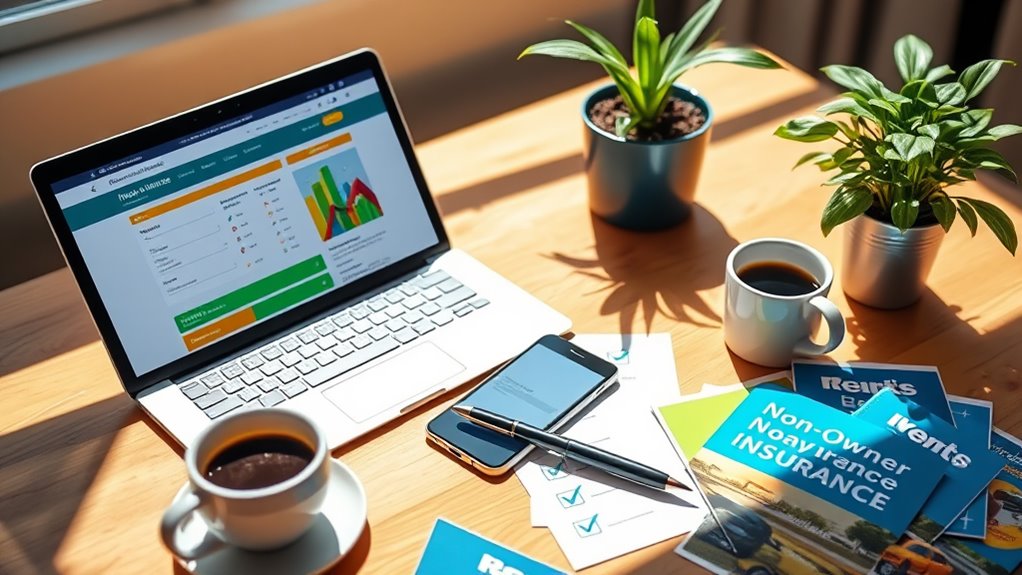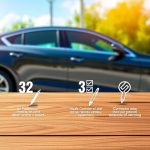Steering through the world of non-owner car insurance can feel like a maze, but it doesn't have to be intimidating. You need to understand your specific coverage needs and how often you borrow or rent vehicles. By following a few straightforward steps, you can secure the right policy for your situation. Let's explore how you can make this process easier and guarantee you're adequately protected on the road.
Key Takeaways
- Assess your driving habits to determine the frequency of borrowing or renting vehicles and your coverage needs.
- Research and compare non-owner car insurance providers to find the best rates and coverage options for your situation.
- Review your state's insurance requirements to ensure compliance with local laws regarding non-owner insurance.
- Consult with an insurance agent for personalized advice and assistance in selecting an appropriate policy.
- Thoroughly review your policy terms and limitations to understand coverage, exclusions, and how it works with other insurance.
Research Insurance Providers Offering Non-Owner Policies

When you're looking for non-owner car insurance, it's essential to research various insurance providers to find the best fit for your needs.
Start by comparing costs, as GEICO offers competitive rates around $463 annually, while Travelers averages about $511. Consider options like State Farm and USAA, with USAA catering exclusively to military families. Additionally, keep in mind that non-owner car insurance is typically cheaper than standard car insurance, making it a cost-effective choice for frequent drivers. This type of insurance is particularly useful for those who do not own a vehicle but still need coverage while driving rented or borrowed cars.
When comparing non-owner car insurance, GEICO's $463 rate and Travelers' $511 offer great starting points.
Look into policy features, as most non-owner insurance includes bodily injury and property damage liability, with options for medical payment coverage and uninsured motorist protection.
You can acquire quotes directly from company websites, through agents, or in-person at locations like Direct Auto.
Assess Your Coverage Needs and Driving Frequency
After gathering information on various insurance providers, it's time to assess your coverage needs and how often you drive.
Consider how frequently you borrow cars from friends or family, or if you regularly use rental or car-sharing services. If you often borrow vehicles, non-owner insurance can offer valuable liability protection.
Evaluate whether you need coverage for bodily injury, property damage, or additional protections like uninsured motorist coverage.
Also, think about your driving frequency; non-owner insurance can be especially beneficial if you're currently in between car ownership.
Check Your State's Insurance Requirements
Before you secure non-owner car insurance, it's important to check your state's insurance requirements. Each state has different laws regarding non-owner insurance, and while it may not be mandatory everywhere, it provides vital liability coverage for drivers without a car.
For instance, in Texas, the minimum coverage includes $30,000 per person for bodily injury and $25,000 for property damage. You'll often need a valid driver's license to obtain this insurance, and it can help fulfill financial responsibility requirements.
Some states might also require proof of insurance to reinstate your license. Understanding these regulations guarantees you have adequate protection while driving non-owned vehicles and helps you avoid legal complications down the road.
Consult With an Insurance Agent for Guidance

Consulting with an insurance agent can provide invaluable insights as you navigate the process of obtaining non-owner car insurance. Agents offer personalized advice, helping you understand your specific needs and options.
They can compare policies and pricing among different insurers, ensuring you find the best fit for your situation. Additionally, they guide you through essential policy elements, such as liability limits and deductibles.
If required, agents can assist with filing SR-22 or FR-44 forms. Some insurance companies even mandate in-person consultations for non-owner policies, making an agent's expertise all the more crucial.
Engaging with an insurance agent streamlines your search for coverage, ensuring you make informed decisions tailored to your driving habits and needs.
Review and Understand Your Policy Terms and Limitations
Understanding your non-owner car insurance policy is essential, as it helps you grasp the coverage you have and any limitations that may apply.
Your policy primarily offers liability coverage for bodily injury and property damage when driving borrowed or rented vehicles. Additionally, it may include uninsured/underinsured motorist protection and medical payments coverage.
Your non-owner car insurance policy mainly provides liability coverage for bodily injury and property damage when using borrowed or rented vehicles.
However, remember that it won't cover damages to the vehicle or any personal injuries you sustain. Policies often act as secondary coverage to the vehicle owner's primary insurance and don't typically support business use.
Review your policy limits and exclusions carefully, ensuring they align with your driving habits and risk factors, and consider adjusting coverage based on your needs.
Conclusion
Now that you're armed with the ultimate guide to snagging non-owner car insurance, you're practically a superhero in the insurance domain! With just a few steps, you can conquer the challenges of borrowing or renting vehicles like a pro. By understanding your coverage needs, researching providers, and consulting an expert, you'll be unstoppable on the road. So go ahead, hit the streets with confidence, knowing you've got the perfect policy backing your every adventure!





